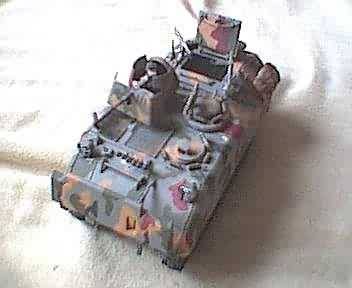

 I decided to make this a "temperate climate" vehicle so painted it a medium grey. The underside and inside of the track wells were painted light grey.
I decided to make this a "temperate climate" vehicle so painted it a medium grey. The underside and inside of the track wells were painted light grey.
By the Author of the Scrapboard : | |
|---|---|
 | Attack, Avoid, Survive: Essential Principles of Self Defence Available in Handy A5 and US Trade Formats. |
 | |
 | Crash Combat Fourth Edition Epub edition Fourth Edition. |
 | |
 | |